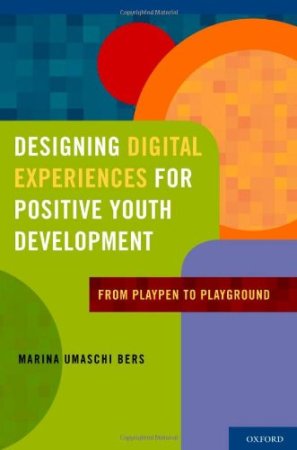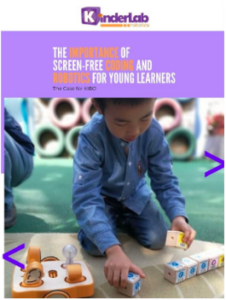Playgrounds and Playpens: A Developmental Perspective on Children as Programmers
We have all been at the playground. Playgrounds engage young children in playful learning. The open-ended nature of the playground’s design facilitates fantasy play and social interactions, discovery and exploration, problem solving and conflict resolution. The playground structures are designed to engage motor skills, to encourage children to try different things. Playgrounds offer opportunities to observe many of the dimensions taught in an introductory course to Child Development: motor, cognitive, personal, social, emotional, moral, and language development.

At the Playground young children can be autonomous and make their own choices. They can go down the slide or climb up a structure. Next, they can move to the sandbox and build a castle with another child, and when bored, they can ask Dad to push them on the swing. Parents and caretakers sit on the benches and intervene when called. Although playgrounds are safe, a child can be pushed off the slide, can bump her head on the structure, and can get into a fight in the sandbox. However, none of these potential risks make us shy away from the playground.
Now, think of a playpen. These pieces of furniture, big or small, made out of rubber and mesh, wood or plastic, serve to corral children into a safe confined space. Playpens are in sharp contrast with playgrounds. They are risk-free, as long as children do not try to climb out of them. Children are not autonomous to choose their explorations. They play with the toys that the adult chooses to put inside the playpen. There is little room for imaginative play, motor skills, and the other dimensions of child development mentioned earlier. The playpen serves as a metaphor to convey lack of freedom to experiment, lack of autonomy for exploration, lack of creative opportunities, and lack of risks.
Given the choice between playgrounds and playpens, most parents and educators prefer the playground. The playground promotes, while the playpen hinders, a sense of mastery, creativity, problem solving, self-confidence, and open exploration. All needed qualities for helping children grow in positive ways.
 I use the metaphor of “playgrounds vs. playpens” to guide our understanding of the diversity of roles that new technologies play in our lives. This metaphor is central to my research that focuses on designing and studying technologically rich environments for children. Check out my book “Designing Digital Experiences for Positive Youth Development: From Playpen to Playground” published by Oxford University Press in 2012 to learn more about this.
I use the metaphor of “playgrounds vs. playpens” to guide our understanding of the diversity of roles that new technologies play in our lives. This metaphor is central to my research that focuses on designing and studying technologically rich environments for children. Check out my book “Designing Digital Experiences for Positive Youth Development: From Playpen to Playground” published by Oxford University Press in 2012 to learn more about this.
Metaphors assume knowledge of a familiar area to illuminate understanding of a different domain. The “playground vs. playpen” metaphor provides a way to understand, not the technologies themselves (those are constantly changing as new products come to market), but the kind of developmentally appropriate experiences that technologies must promote: problem solving, imagination, cognitive challenges, social interactions, motor skills development, emotional exploration, and making different choices.
Playground-style technologies provide structures and tools for children to make their own projects: games and illustrations, computer programs, movies and music, animations and robotic creatures. These technologies engage children as producers, and not only as consumers. My work focuses on a specific kind of production that children can do with technology: computer programming, or coding.
Robotic kits such as KIBO present a wonderful opportunity to introduce children to the world of programming and engineering while having a playground type of experience.



















